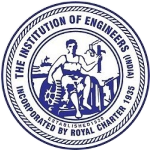Advantages of use of TubularHollow Sections over Conventional Open Sections in Hydro-Carbon Industry Structures
Abstract
Tubular/ Hollow sections are gaining popularity in recent times, due to its higher strength-to-weight ratio than conventional open sections as well as for the reason that, hollow sections create lightweight and visually attractive structures. Due to their cross sectional configuration, such sections have inherent advantage in torsional buckling resistance capacity and axial load carrying capacity. Thus, its usage is continuously being increased in the hydrocarbon sector as well. Tubular/ hollow sections have been successfully used in many components of the structures, in which traditionally MC boxed sections were used due to its reduced requirement of welding, as compared to MC boxed sections. Therefore, it is imperative to analyze hollow sections and open rolled sections considering design strength and steel quantity requirements, to enable the designers to select the appropriate section, fitting the functional requirements and economics of the project. This study presents the comparative benefits of using hollow sections instead of open sections by presenting a theoretical comparison as well as a case study of three categories of industrial structures in hydrocarbon industry. Further it presents a detailed account of limitations in use of hollow sections on large scale in industrial structures of hydro carbon sector.
Downloads
References
https://skyciv.com/technical/benefits-of-different-steel-sections/
Hollow sections in Structural applications by Prof. Dr. J. Wardenier, Delft University of Technology, Netherlands.
Copyright (c) 2021 AMRESH KUMAR, Papia Mandal, Anurag Sinha

This work is licensed under a Creative Commons Attribution 4.0 International License.
I/We agree with the provision of the Bye-Law 118 of The Institution of Engineers (India) which states that copyright of each paper published in Institution Journal or Annual Technical Volume in full or in Abstract at its centres shall lie with the Institution.

